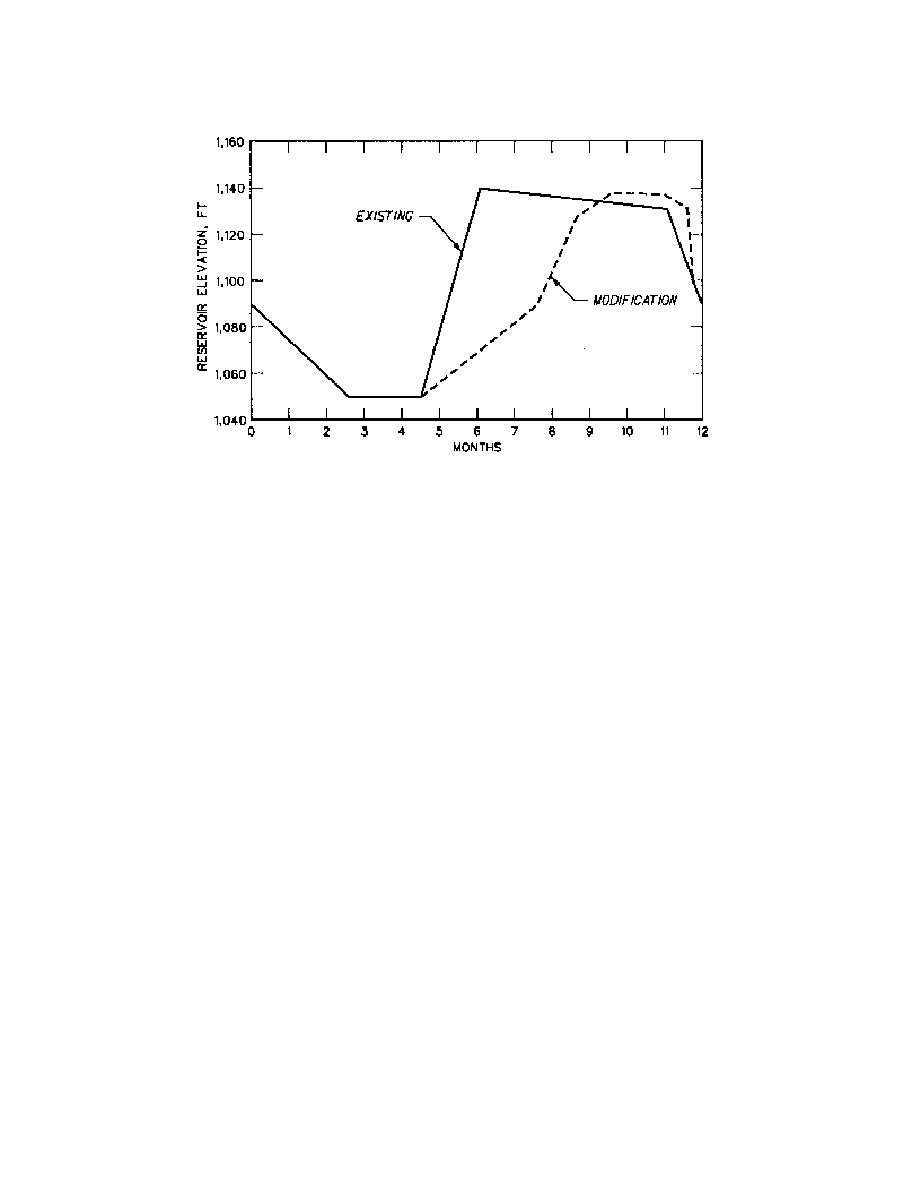
|
|

|
||
 Figure 4.4.1 Example of guide curve modification
4.4.1.2 Design Criteria
The implementation of a proposed change to the water control plan or guide curve should
occur only after the water quality objectives of a proposed change are stated. This will involve
identification of existing water quality parameters of concern and the desired goals. Since no general
procedure for the evaluation of a proposed change in the water control plan for a reservoir project has
been published, a method for evaluating a guide curve change is given below. The specific objective of
the guide curve change must be determined, such as reduced turbidity in the reservoir. This will involve
determination of existing water quality parameter concentrations, such as turbidity levels, in the reservoir
relative to the existing guide curve. Next, the flexibility for change of the guide curve or the upper and
lower limits of the curve must be examined to determine the amount of change available. This must be
considered within the context of the authorized project purposes. The impacts of the proposed change
of the guide curve on the water quality objective must then be determined. This may require a variety
of assessment techniques ranging from simple computations of hydraulic residence time to two-
dimensional numerical models. The level of computational sophistication required is predicated on the
water quality objective and degree of change of the guide curve. Relatively small changes in the guide
curve, which may have minimal impacts on the water quality objective or other project purpose, may be
evaluated with residence time and stability computations. Large changes, which may expand the size
and volume of the pool, may require a numerical model investigation to evaluate the impacts of the
change.
4.4-2
|
||
 |
||